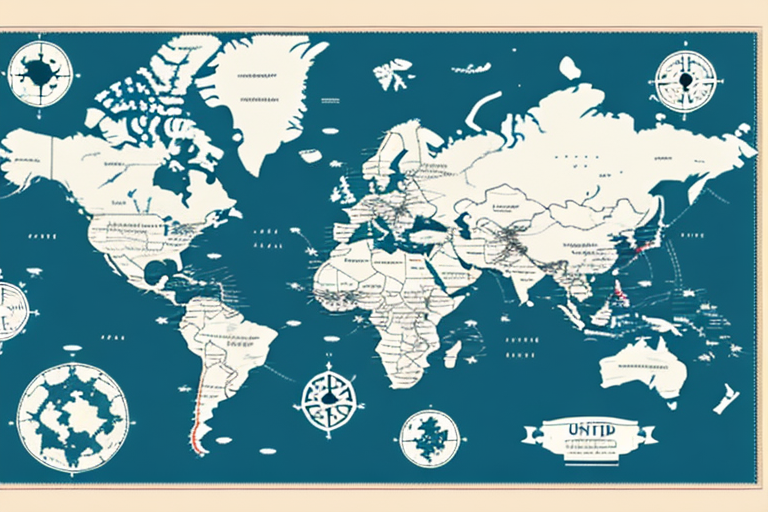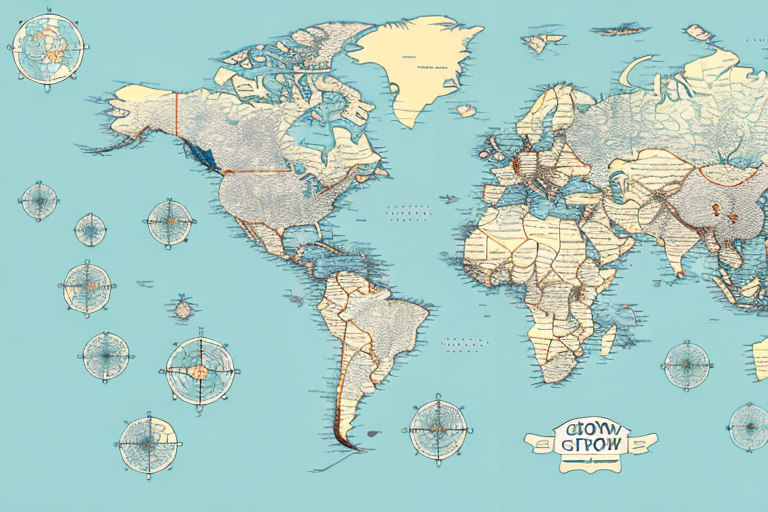Understanding UPS Next Day Shipping Rates By Zone
Shipping with UPS can be complex, especially when navigating their rates for next day delivery. This guide aims to provide a comprehensive understanding of how UPS determines shipping rates, the factors influencing them, and the methodology to accurately calculate next day shipping rates by zone. Additionally, we’ll offer actionable tips to reduce UPS shipping costs and highlight common mistakes to avoid when preparing a shipment with UPS.
How UPS Determines Shipping Rates
UPS calculates shipping rates based on several key factors:
- Destination: The geographical location where the package is being sent plays a significant role in determining the cost.
- Weight and Dimensions: Heavier and larger packages generally incur higher shipping fees.
- Distance: The distance between the origin and destination affects the rate, with longer distances typically costing more.
- Service Type: Different shipping options, such as ground, air, or international services, have varying costs.
Additionally, UPS applies a fuel surcharge to account for fluctuations in fuel prices. This surcharge is adjusted monthly based on the current fuel rates, impacting the overall shipping cost.
The type of service selected can also influence the shipping rates. UPS offers a range of options, including:
- Ground Shipping: Cost-effective but slower delivery times.
- Air Shipping: Faster delivery with higher costs.
- International Shipping: Rates vary based on the destination country and customs requirements.
Additional services, such as signature confirmation or Saturday delivery, may incur extra fees. Choosing the appropriate service type based on your needs can help manage shipping costs effectively.
What is a Shipping Zone?
A shipping zone is a geographical area defined by UPS to calculate shipping rates. The United States is divided into eight primary zones:
- Zone 1: Closest to the origin
- Zone 2
- Zone 3
- Zone 4
- Zone 5
- Zone 6
- Zone 7
- Zone 8: Furthest from the origin
The nearer the destination is to the origin, the lower the shipping rate, and vice versa. It's important to note that shipping zones can differ between carriers. For instance, FedEx utilizes nine zones instead of eight, and some carriers may adjust rates based on factors like population density or proximity to major transportation hubs.
International shipments introduce additional complexity, as different countries fall into various international zones. Rates can vary significantly based on the destination country's specific zone classification and local regulations.
Factors That Affect UPS Shipping Rates
Several elements influence UPS shipping rates, including:
- Package Weight and Dimensions: Heavier and larger packages cost more to ship.
- Shipping Distance: Greater distances increase the shipping cost.
- Shipping Speed: Faster delivery services come at a premium.
- Additional Services: Insurance, special handling, and other services can add to the cost.
- Currency Exchange Rates: Relevant for international shipments.
Moreover, the type of items being shipped can impact rates. Shipping hazardous materials or items requiring special packaging may incur additional fees. Seasonal demand fluctuations, such as during the holiday season, can also lead to higher shipping rates due to increased demand.
Understanding these factors allows businesses to make informed decisions about their shipping strategies and potentially reduce costs.
How to Calculate UPS Next Day Shipping Rates by Zone
Calculating UPS next day shipping rates by zone involves the following steps:
- Determine Package Weight and Dimensions: Accurately measure and weigh your package.
- Identify the Shipping Zone: Use the UPS Zone Chart to determine the zone based on the origin and destination.
- Select the Desired Service: Choose UPS Next Day Air or another expedited service.
- Consult the UPS Rate and Service Guide: Refer to the guide to find the rate corresponding to your package’s weight, dimensions, zone, and selected service.
- Factor in Additional Fees: Include any applicable fuel surcharges, insurance, or special handling fees.
For precise calculations, use the UPS Rate Calculator, which provides real-time rate estimates based on your input.
Always verify all fees and costs before finalizing your shipment to avoid unexpected expenses.
Tips for Reducing UPS Shipping Costs
Here are several strategies to help reduce your UPS shipping expenses:
- Consolidate Shipments: Combine multiple packages into a single shipment to lower costs.
- Ship During Off-Peak Times: Shipping when fuel surcharges are lower can save money.
- Optimize Packaging: Use appropriately sized packaging to minimize weight and dimensions.
- Negotiate Rates: If you have high shipping volumes, negotiate better rates directly with UPS.
- Utilize UPS Online Tools: Leverage UPS's online resources to find the most cost-effective shipping options.
Implementing these strategies can lead to significant savings on your UPS shipping costs.
The Importance of Accurate Package Dimensions and Weight
Providing precise package dimensions and weight is critical for several reasons:
- Cost Accuracy: Incorrect information can lead to overpaying for shipping or unexpected additional fees.
- Efficient Processing: Accurate data ensures that packages are processed swiftly through UPS's automated systems.
- Safety: Proper weight and size information prevent handling hazards and ensure the safety of both the handlers and the packages.
Accurate measurements help in selecting the most economical shipping option and avoid delays or complications during transit.
How to Choose the Best Packaging Materials for Your Shipment
Selecting the right packaging materials impacts both the safety and cost-effectiveness of your shipment:
- Protective Materials: Use bubble wrap, packing peanuts, or foam inserts to safeguard items.
- Appropriate Boxes: Choose sturdy, appropriately sized boxes to prevent damage during transit.
- Eco-Friendly Options: Opt for biodegradable or recyclable materials to reduce environmental impact.
- Weight and Size Considerations: Avoid oversized or excessively heavy packaging to minimize shipping costs.
Proper packaging ensures that items arrive intact and helps in optimizing shipping expenses.
Understanding the Different UPS Delivery Options Available
UPS offers a variety of delivery options tailored to different needs:
- Next Day Air: Guarantees delivery by the next business day; ideal for urgent shipments.
- Two-Day Air: Ensures delivery within two business days; a balance between speed and cost.
- Ground Shipping: The most economical option, typically delivering within 1-5 business days based on distance.
- International Shipping: Various options for global deliveries, including expedited services for faster transit times.
Choosing the right delivery option depends on your urgency, budget, and the nature of the shipment.
For more details, visit the Next Day Air service page.
How to Track Your UPS Shipment and Monitor Delivery Status
Tracking your UPS shipment is straightforward with UPS’s online tracking system, providing real-time updates on your package's status:
- Obtain Your Tracking Number: Found on your shipping label or confirmation email.
- Visit the UPS Tracking Page: Navigate to the UPS Tracking page.
- Enter the Tracking Number: Input the number into the tracking field and click "Track."
- Review Shipment Status: Monitor the progress and delivery updates of your package.
Additionally, UPS offers the UPS My Choice program, allowing you to manage delivery preferences, such as holding packages for pickup or specifying delivery locations. This service enhances control over your shipments and provides added convenience.
Common Mistakes to Avoid When Preparing a Shipment with UPS
Avoiding common pitfalls can ensure smooth and cost-effective shipping:
- Inaccurate Measurements: Always provide correct package dimensions and weight to avoid extra fees.
- Poor Packaging: Ensure packages are securely packed and properly labeled to prevent damage and delays.
- Neglecting Discounts: Take advantage of volume discounts or negotiated rates if available.
- Ignoring Shipping Guidelines: Adhere to UPS’s packaging and shipping guidelines to ensure compliance and efficiency.
By being mindful of these common mistakes, you can optimize your shipping process and minimize unnecessary costs.
Benefits of Using UPS Next Day Shipping for Your Business
Opting for UPS Next Day Shipping offers several advantages for businesses:
- Speed and Reliability: Ensures urgent packages are delivered promptly, enhancing customer satisfaction.
- Competitive Edge: Offering expedited shipping options can differentiate your business from competitors.
- Enhanced Customer Service: Reliable delivery times build trust and encourage repeat business.
- Operational Efficiency: Streamlined shipping processes contribute to overall business efficiency.
Investing in next day shipping can be a strategic move to support business growth and customer retention.
How to Negotiate Better Shipping Rates with UPS
Businesses with significant shipping volumes can negotiate more favorable rates with UPS:
- Consolidate Shipments: Combining shipments can lead to bulk discounts.
- Commit to Volume: Agreeing to a minimum monthly shipment volume can provide leverage for rate reductions.
- Build Relationships: Establishing a strong relationship with UPS representatives can facilitate better negotiation outcomes.
- Leverage Technology: Use UPS’s online tools to analyze shipping data and present a compelling case for discounts.
Negotiating better rates can lead to substantial savings and improve your business’s profitability.
Comparing UPS Next Day Shipping Rates with Competitors
To ensure you’re receiving the best shipping rates, it’s essential to compare UPS’s next day shipping costs with those of other carriers like FedEx and DHL:
- Service Comparison: Evaluate the speed, reliability, and coverage of different carriers.
- Cost Analysis: Compare rates based on package weight, dimensions, and shipping zones.
- Additional Features: Consider value-added services such as tracking, insurance, and customer support.
By conducting a thorough comparison, you can select the shipping provider that offers the best balance of cost and service for your business needs.
Best Practices for Packing Fragile Items When Using UPS Next Day Shipping
Shipping fragile items requires careful packing to prevent damage during transit:
- Use Protective Cushioning: Wrap items in bubble wrap or use packing peanuts to absorb shocks.
- Label as Fragile: Clearly mark the package to alert handlers to the delicate contents.
- Choose Sturdy Boxes: Select strong, appropriately sized boxes to provide adequate support.
- Avoid Overpacking: Ensure the package is not overly stuffed, which can compromise protection.
Implementing these best practices helps ensure that fragile items reach their destination safely and intact.
Conclusion
Understanding UPS next day shipping rates by zone involves navigating various factors, including destination, package weight and dimensions, and selected services. By leveraging the insights and strategies outlined in this guide, you can effectively manage and reduce your shipping costs while ensuring timely deliveries. Staying informed about UPS’s delivery options and utilizing their tracking systems can enhance your shipping efficiency, ultimately contributing to superior customer satisfaction and a competitive advantage in the marketplace.








